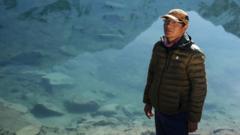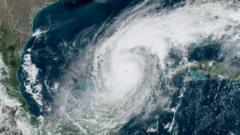New research indicates that glaciers will continue to shrink significantly over the coming centuries, even if global temperatures stabilize. Limiting warming could still mitigate severe losses, highlighting the need for urgent climate action.
Persistent Glacial Melting: A Look Into Long-term Climate Effects

Persistent Glacial Melting: A Look Into Long-term Climate Effects
A recent study reveals that glaciers are destined to lose mass for centuries, regardless of immediate climate action.
Despite efforts to address climate change, glaciers are predicted to dramatically lose mass over the next century, a recent study has illuminated. This research highlights an alarming aspect of climate change: even with global temperatures held steady—an improbable scenario—glaciers outside of major ice sheets are projected to lose an estimated one-third of their mass.
The findings, published in the journal Science, indicated that limiting global warming to 1.5 degrees Celsius above preindustrial levels can preserve substantially more glacial ice than allowing temperatures to rise by 2.7 degrees Celsius by 2100, a current projection. “Every tenth of a degree less of warming will help preserve glacial ice,” emphasized Lilian Schuster, a glacial modeler involved in the study. The research supports the narrative that more ambitious climate measures could significantly benefit glacial preservation.
While the melting of vast ice sheets in Antarctica and Greenland garners much of the attention due to their potential to raise sea levels drastically, the role of smaller glaciers — which constitute less than half a percent of the world’s ice — should not be overlooked. These glaciers, though less influential than their larger counterparts, can still contribute roughly one foot to global sea level rise if they continue to melt unchecked.
This multifaceted analysis illustrates the urgency for global action to curb temperature increases, as the fate of the world's glaciers hangs in the balance.
The findings, published in the journal Science, indicated that limiting global warming to 1.5 degrees Celsius above preindustrial levels can preserve substantially more glacial ice than allowing temperatures to rise by 2.7 degrees Celsius by 2100, a current projection. “Every tenth of a degree less of warming will help preserve glacial ice,” emphasized Lilian Schuster, a glacial modeler involved in the study. The research supports the narrative that more ambitious climate measures could significantly benefit glacial preservation.
While the melting of vast ice sheets in Antarctica and Greenland garners much of the attention due to their potential to raise sea levels drastically, the role of smaller glaciers — which constitute less than half a percent of the world’s ice — should not be overlooked. These glaciers, though less influential than their larger counterparts, can still contribute roughly one foot to global sea level rise if they continue to melt unchecked.
This multifaceted analysis illustrates the urgency for global action to curb temperature increases, as the fate of the world's glaciers hangs in the balance.



















